Articles and News
HOW TO CULTIVATE THE COLLECTOR CUSTOMER | November 28, 2012 (0 comments)
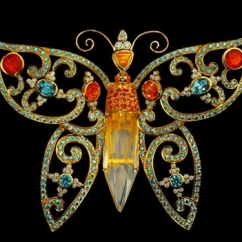
Merrick, NY—Every luxury jeweler’s dream customer is the one who has a real passion for collecting jewelry. Not only is this customer likely to spend much more, but if you’re also the primary source of her favorite pieces, she’s a guaranteed repeat customer. And if she’s a collector in the truest sense of the word—seeking the rare and unusual—the pieces wants aren’t online.
“Some people are just natural born collectors,” says Janet Levy of The DeYoung Collection, a New York-based dealer of vintage and estate jewelry. “They started with marbles as children, maybe progressed to music albums, and eventually to Porsches.” Whatever their collection, be it cars or jewelry, it has to be something the customer can build on, she says. Jewelers should keep a lot of notes as to their taste, style, price of what they’ve bought, etc., so that when a similar piece comes in to add to their collection, it’s easy to call with ideas.
Collecting is not limited to older clients. Younger customers may have collected Beanie Babies or “pogs” as children instead of marbles, but the mentality is the same. Younger consumers also are very much into fashion, observes Levy: her daughter and her friends are far more aware of luxury brands—and buy much more—than she did at the same age, she says.
There’s a difference between collecting and consuming, says Santa Fe-based designer Paula Crevoshay. To paraphrase comedian Jerry Seinfeld, “Not that there’s anything wrong with [consuming]” but the collector who understands jewelry as an art form has a different mindset than the one who simply wants another pretty bauble. Both customers are good for a jeweler’s bottom line, but what brings each into the store is different.
“I’ve always done one-of-a-kind pieces exclusively. My goal was to state clearly that jewelry is one of the fine arts. It’s not only functional; it transcends function to tell the story of the culture,” says Crevoshay. One of her pieces, a gold and gem-encrusted butterfly, is at the top of this page.
It’s interesting how much history is a part of our industry, she says. Whether it’s legendary diamonds like the Koh-I-Noor or the Hope, or simply preserving the best science of our industry, gemology and lapidary skills, she sees the role of jewelry designers as telling the story of 20th century jewelry. A collector understands that, taking the time to understand both art and artist.
Crevoshay may be an art purist, but she’s also practical. “Money is definitely part of the process,” she says bluntly. In earlier times, rare jewelry would have been the province of the royal court or at least the aristocracy. Today, however, wealthy collector customers—Crevoshay says there really aren’t any other kind—leave a historic trail as to the development of U.S. wealth. These customers, in addition to being rich, are sophisticated, well traveled, philanthropic, and sensitive to supporting the arts.
“Art and historic jewelry tells the story of a culture, and the people who preserve a culture [through collecting] can because they have deep enough pockets,” she says. It was true of the Medicis in renaissance Italy, and it’s true of today’s affluent collectors, whether their passion is jewelry or other forms of art. They’re also the ones who are relatively immune to economic fluctuations: Crevoshay’s business first doubled, then tripled, in the last three years.
Beth Anne Bonanno, a New York-based jewelry historian and consultant, concurs. Only about 2% or 3% of the population can afford the top 20th century collectible jewelry, she says. Of those, only half will get what top avant-garde designers like JAR or Daniel Brush do.
But that’s ok, because collectors fall into different camps: some are passionate about the design, others are passionate about stones, others are passionate about an era or the provenance of a name, and still others collect around a theme, such as stars or insects. DeYoung’s clientele spans all categories, but Levy says across the board, signed pieces are far more in demand than unsigned pieces of similar vintage.
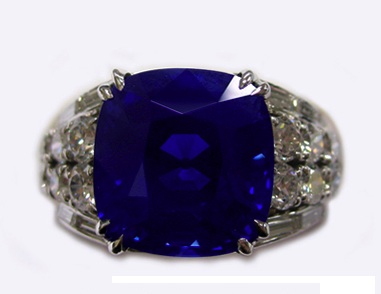
Some collectors focus on design, others on rare gemstones, such as this Kashmir sapphire ring from The DeYoung Collection.
“We just had a woman come in today who bought two lovely little Van Cleef & Arpels brooches. They weren’t big, but they were signed. She liked the designs well enough, but the Van Cleef name did enter into her decision to buy them because she felt that it would carry more value in case her children wanted to sell them.”
Someone who understands design is completely different from someone who is drawn to stones, says Bonanno. “There are men and women of great means who don’t question what someone like Todd Reed does, but there also are collectors who won’t buy without a cert. Edgy design doesn’t compute, because it doesn’t include goods. That collector will understand someone like Paula Crevoshay or Erica Courtney [both known for their use of often-rare colored gemstones].”
“There are so many ways to be a collector,” agrees Crevoshay. Courting a collector is no different than any other customer, say the experts. The usual strategy—building a relationship, keeping track of their interests, spending habits, and special events—is part of it, but Levy says educating them is a really great way to pique their interest. One of DeYoung’s customers in Taiwan recently remodeled its store with a small lecture hall on its lower level. It’s used for a variety of special events, of course, but it was purpose-built for education, she says.
“Jewelers have to be very creative to get consumers to part with money these days,” Levy says wryly.
Because people collect for different reasons, building a collector clientele doesn’t have to put the jeweler out on a limb with product he or she doesn’t feel confident of selling. Crevoshay says jewelers absolutely can attract a collector customer within their normal comfort zone of doing business, especially for gem lovers or customers who like a particular popular designer. While Levy warns that popular names may not have the long-term value appreciation that rare pieces do, even some of the rare names won’t always fetch top dollar on the resale market.
“Signed Cartier from the 1970s is not the same as signed Cartier from the 1930s,” she says.
Naturally, provenance will boost the value of a piece. But there’s no set formula to calculate the price difference for a piece with provenance versus one without. Bonanno echoes Levy’s point that even among sought-after names, not every piece is important, especially among designers who do both one-of-a-kind and commercial work.
Being in a museum or exhibition can help build value for a piece. Bonanno remembers a particular De Young collection of masterpieces of French jewelry. Some pieces in the group were already collectible, she says; others became so because of being in the collection.
“If you hold onto it, make sure it’s in the right place. Someone who wants it will buy it.”
Crevoshay agrees. Already a museum veteran, she is the focus of an upcoming one-woman retrospective exhibition titled “Gardens of Light” at the Carnegie Museum in Pittsburgh, PA. Many of her customers are loaning back their pieces for the exhibit, and an eponymous book is being published in conjunction with the exhibition. It gives provenance to her pieces, and, adds the practical side of the artist, “museums know where to sell the work.”
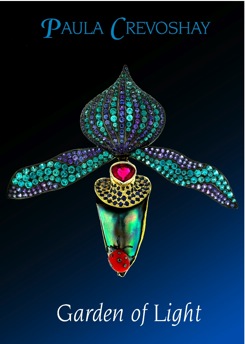
Boosting the collectability of jewelry is not just a retailer’s job. Designers and manufacturers must stay true to their artistic vision, says Crevoshay. Not being overexposed is an added bonus, says Levy, but points out that the younger generation is a good audience for building collectors of commercial pieces.
Bonanno suggests designers and manufacturers forge a good relationship with experts in collectability, and in the meantime, be good keepers of their own history.
“Have great images available and keep good records. Oscar Heyman Bros., for example, takes such great curatorial care of their pieces. Some people don’t keep great records, but Oscar Heyman is brilliant at that.”
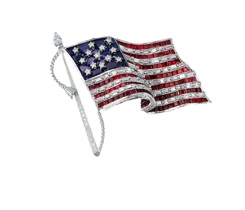
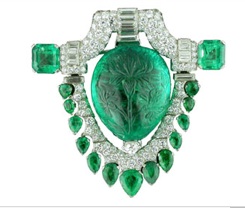
Every piece of Oscar Heyman jewelry is signed and numbered, and its original information is archived at the company. Left, a ruby, sapphire, and diamond American flag pin; right an emerald and diamond clip from the estate of Marjorie Merriwether Post, currently in the Boston Museum of Fine Arts.
Finally, says Crevoshay, every year there has to be something new and exciting and unique that adds to the depth and breadth of the artist. Otherwise, why collect?







